
京都 建仁寺 两足院 半夏生 Kyoto Kennin-ji Ryosoku-in Hangesho(Saururus chinensis)
清水寺 Kiyomizu-dera
清水寺是去京都的必游之地。寺庙介绍来自维基百科:
Kiyomizu-dera is a must place in Kyoto. The following introduction is from Wikipedia:
清水寺是一座位于日本京都府京都市东山区清水的寺院,於778年(宝龟9年)前后由延镇上人起造。清水寺的山号为音羽山,主要供奉千手观音,原本属于法相宗这一宗派但目前已独立,成为北法相宗的大本山。
清水寺与北山鹿苑寺(金阁寺)、岚山天龙寺等同为京都境内最著名的名胜古蹟,一年四季前来朝拜的香客或来访的观光客是络驿不绝。除此之外,清水寺也与石山寺(滋贺县大津市),长谷寺(奈良县樱井市)等寺庙并列,自古以来就一直以嗣奉观音的庙宇而为人所熟知,也是西国三十三个所(在关西地区参拜33所观音庙的巡访活动)中第16所寺庙。自平安时代以来,就经常出现于日本文学作品当中。1994年,清水寺以身为古都京都的文化财之一部分,列名至世界文化遗产中。
Kiyomizu-dera, officially Otowa-san Kiyomizu-dera, is an independent Buddhist temple in eastern Kyoto. The temple is part of the Historic Monuments of Ancient Kyoto (Kyoto, Uji and Otsu Cities) UNESCO World Heritage site. It was one of 20 finalists for the New7Wonders of the World.
Kiyomizu-dera was founded in the early Heian period. The temple was founded in 778 by Sakanoue no Tamuramaro, and its present buildings were constructed in 1633, ordered by the Tokugawa Iemitsu. There is not a single nail used in the entire structure. It takes its name from the waterfall within the complex, which runs off the nearby hills. Kiyomizu means clear water, or pure water.
It was originally affiliated with the old and influential Hossō sect dating from Nara times. However, in 1965 it severed that affiliation, and its present custodians call themselves members of the "Kitahossō" sect.
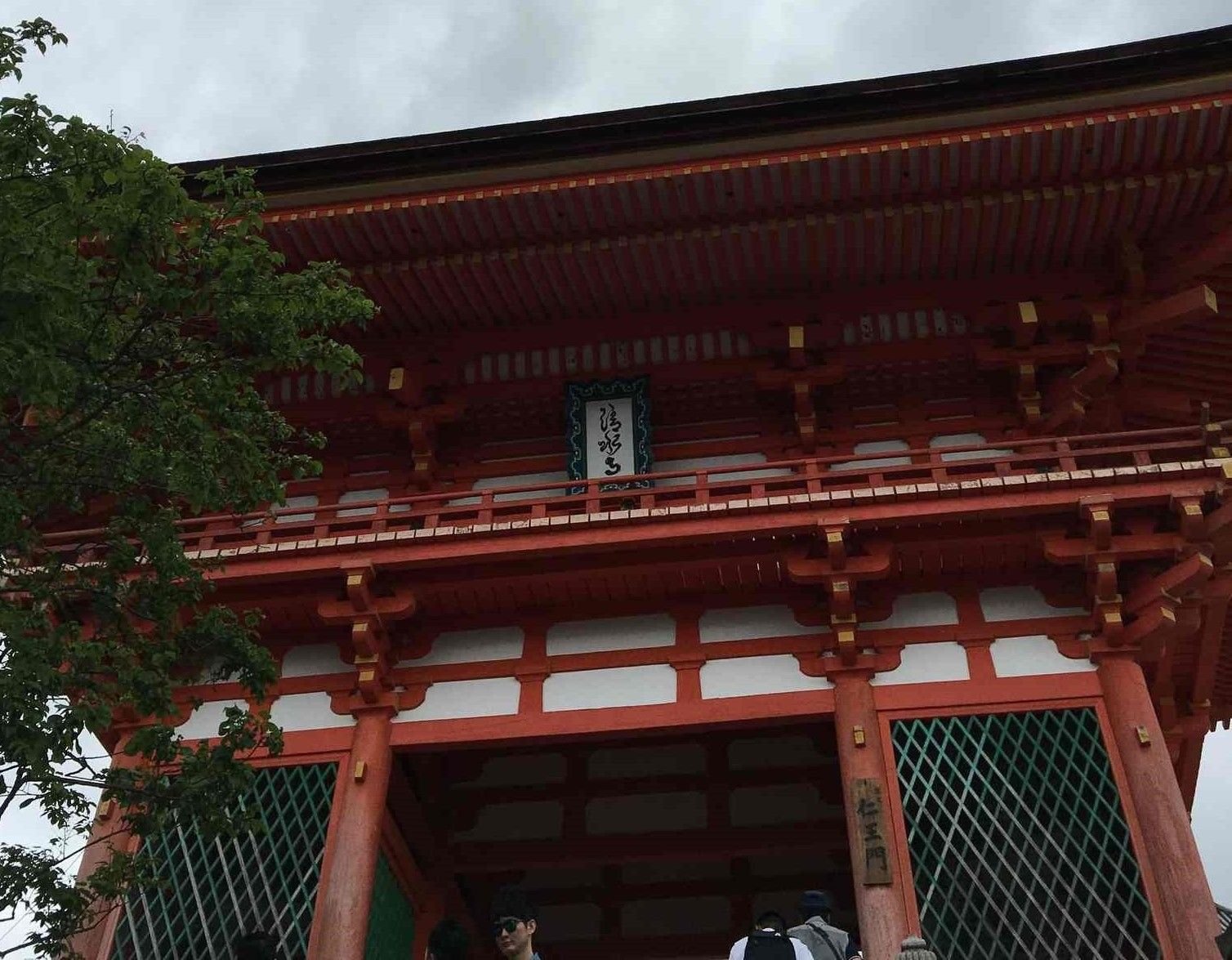
清水寺在半山腰,要经过一条两边都是特色商店的街道,就可以到达正门-仁王门。
Kiyomizu-dera is on the hillside. There is a street with various shops before the main entrance.
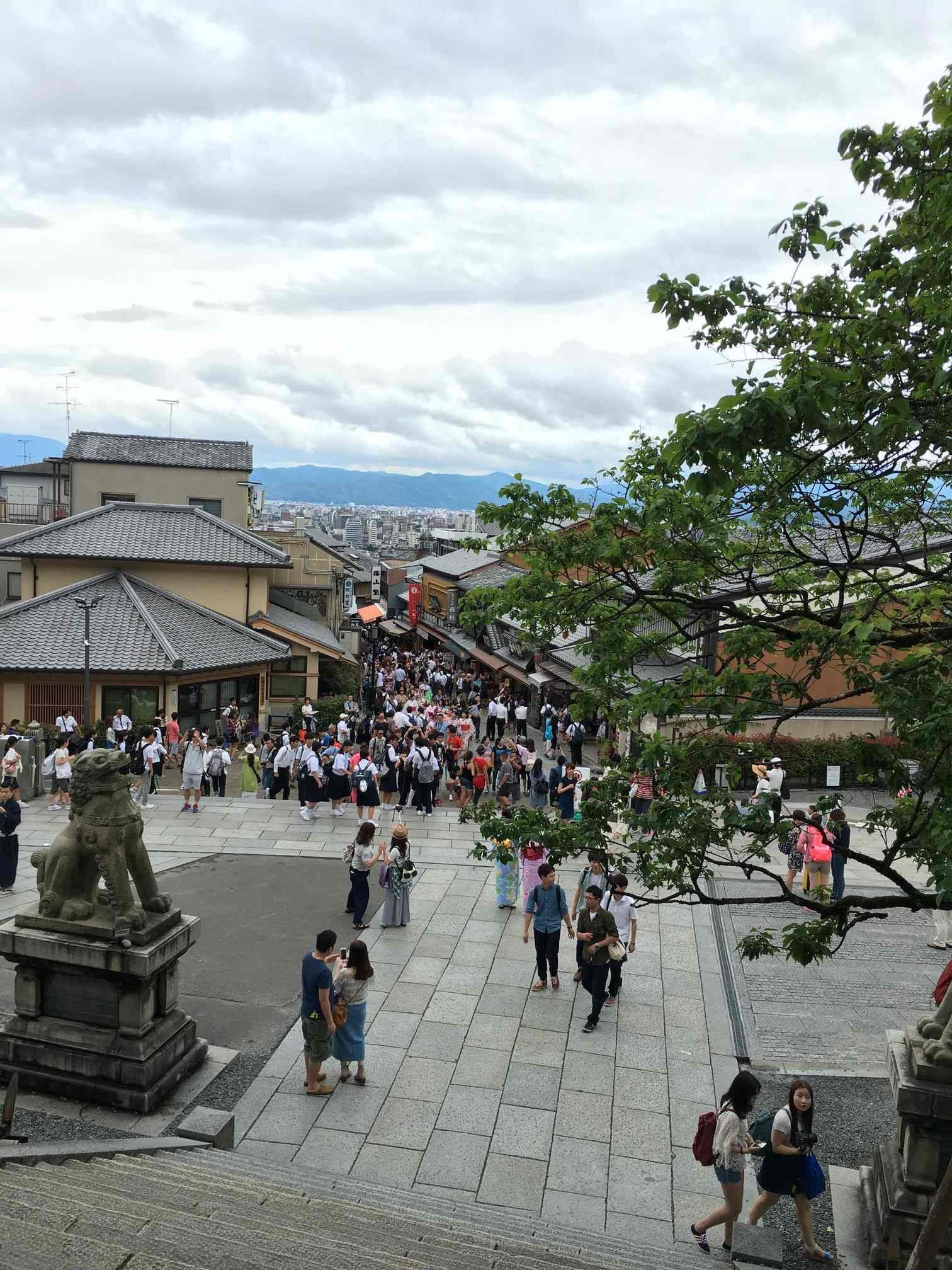
门前车水马龙。
There were a lot of people here.
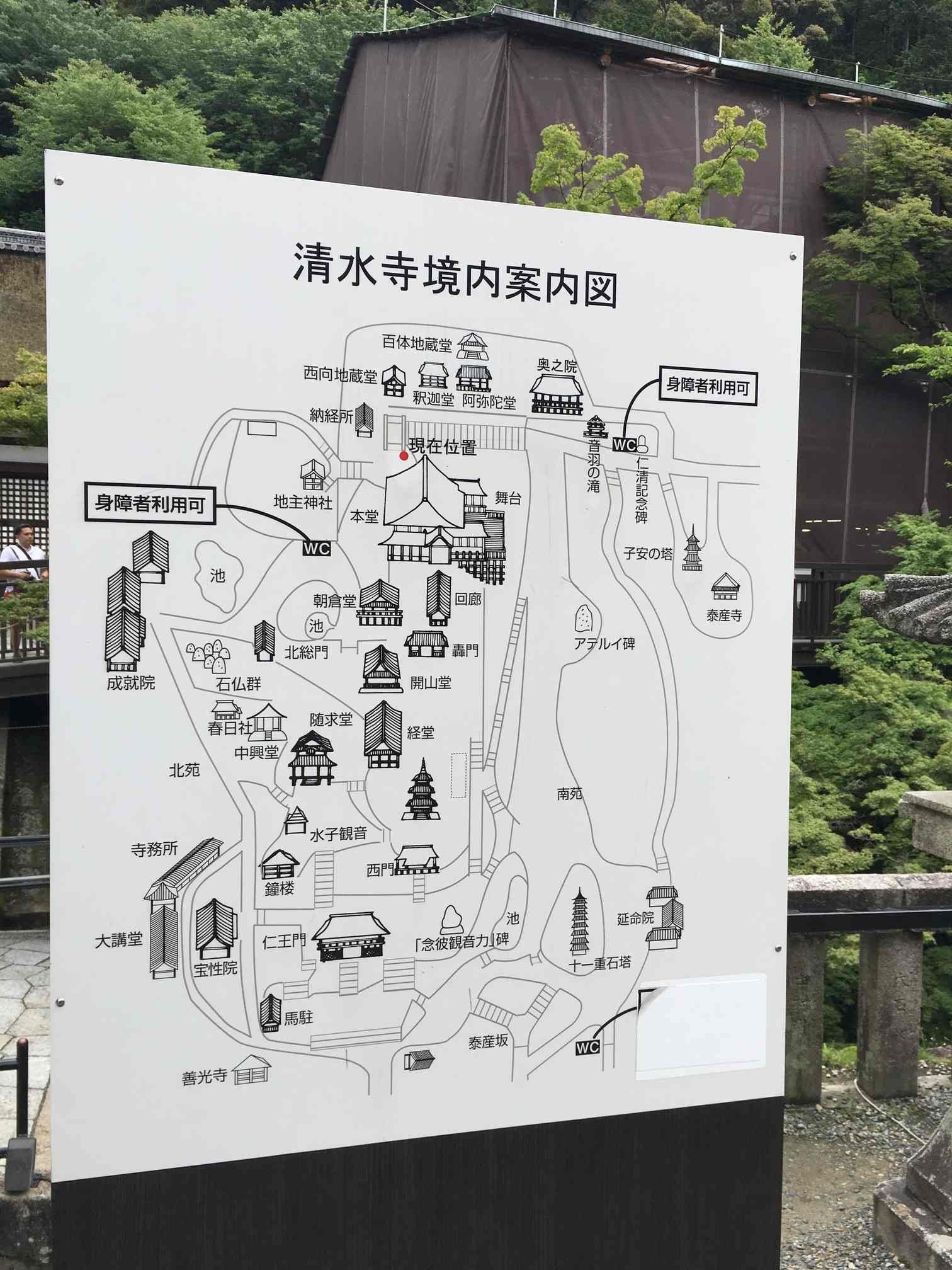
清水寺地图。 Map of Kiyomizu-dera
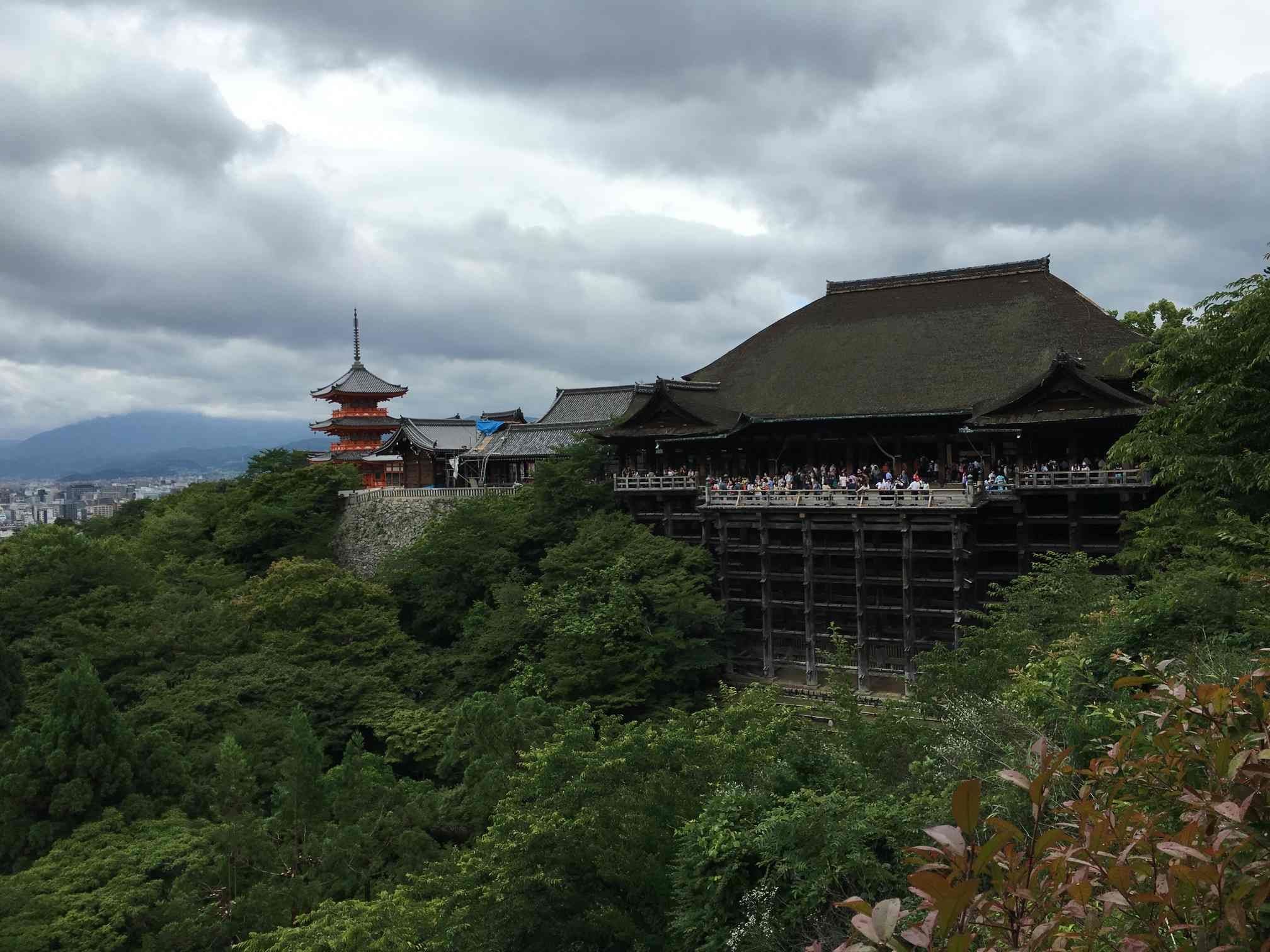
清水寺最经典的角度。这是大殿前悬空的「舞台」,由139根高数十公尺的大圆木支撑。寺院建筑气势宏伟,结构巧妙,没有用一根钉子。
This is a classic view of Kiyomizu-dera. The main hall has a large veranda, supported by 139 tall pillars, that juts out over the hillside and offers impressive views of the city. Large verandas and main halls were constructed at many popular sites during the Edo period to accommodate large numbers of pilgrims. The structure is very elegant without a nail.
建仁寺 两足院 Kennin-ji Ryosoku-in
从清水寺出来,在袛园的商业街逛了逛。
We went to streets around Gion after Kiyomizu-dera.
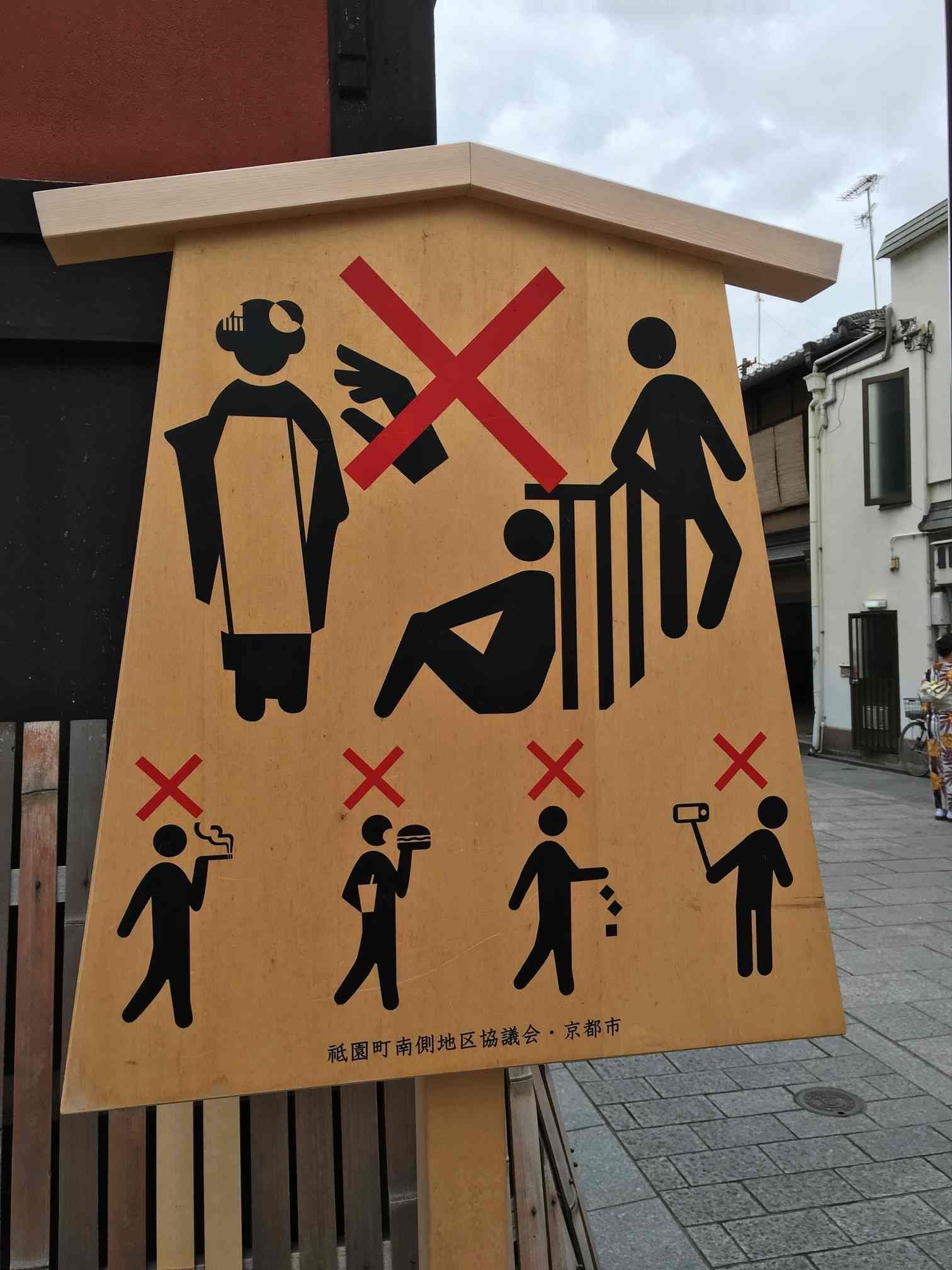
袛园花见小路街边的告示牌。据说傍晚时分会有很多艺妓在花见小路附近一带街上走动,因为曾经发生过外国游客拦路,甚至拉扯/扯烂她们和服的事件, 所以出现了这条规定,在花见小路口立起了用图示标明「禁止触摸舞妓」的告示。
It is a sign on the Hanamikoji Street. It was said that there were many Geisha walking around the Hanamikoji Street at night. Sometime foreigners wanted to talk and took photos with them. It was impolite and sometimes ended in a bad manner. Therefore in order to protect these Geisha, the authority made this rules to forbid touching Geisha.
小路的尽头是建仁寺,本来看了这么多寺庙,觉得建仁寺普普通通,但是误打误撞进了两足院,见到了这次旅行最美的庭院景色 - 半夏生特别展。我们到的时候差不多快下午四点半了,展览4点半停止售票,五点钟关门。我们算是最后2个进去的。一个年纪大些的管理人员很匆忙的用日语给我们介绍,我们也没听懂。然后带我们进了正对庭院的房间。庭院布置的非常别致,有茶室,山,水,石,树,花,小路,比仁和寺的北庭素雅,但更有层次感。旁边的茶室,可以享用茶点,当然是另外收费的。
In the end of the Hanamikoji Street it is Kennin-ji. Originally I thought Kennin-ji should be a normal temple. However when we entered in Ryosoku-in we saw the most beautiful gardening in this trip - Special Show for Hangesho. The show stopped ticketing on 4:30pm and closed on 5:00pm. We arrived there around 4:30pm and we successfully got in. After a short introduction in Japanese we saw the gardening. Wow~, it was amazing. The tea room, hill, pond, rock, trees, flowers and path together were very elegant, neat with layers. There were tea and desserts served in the tea room with extra fee.
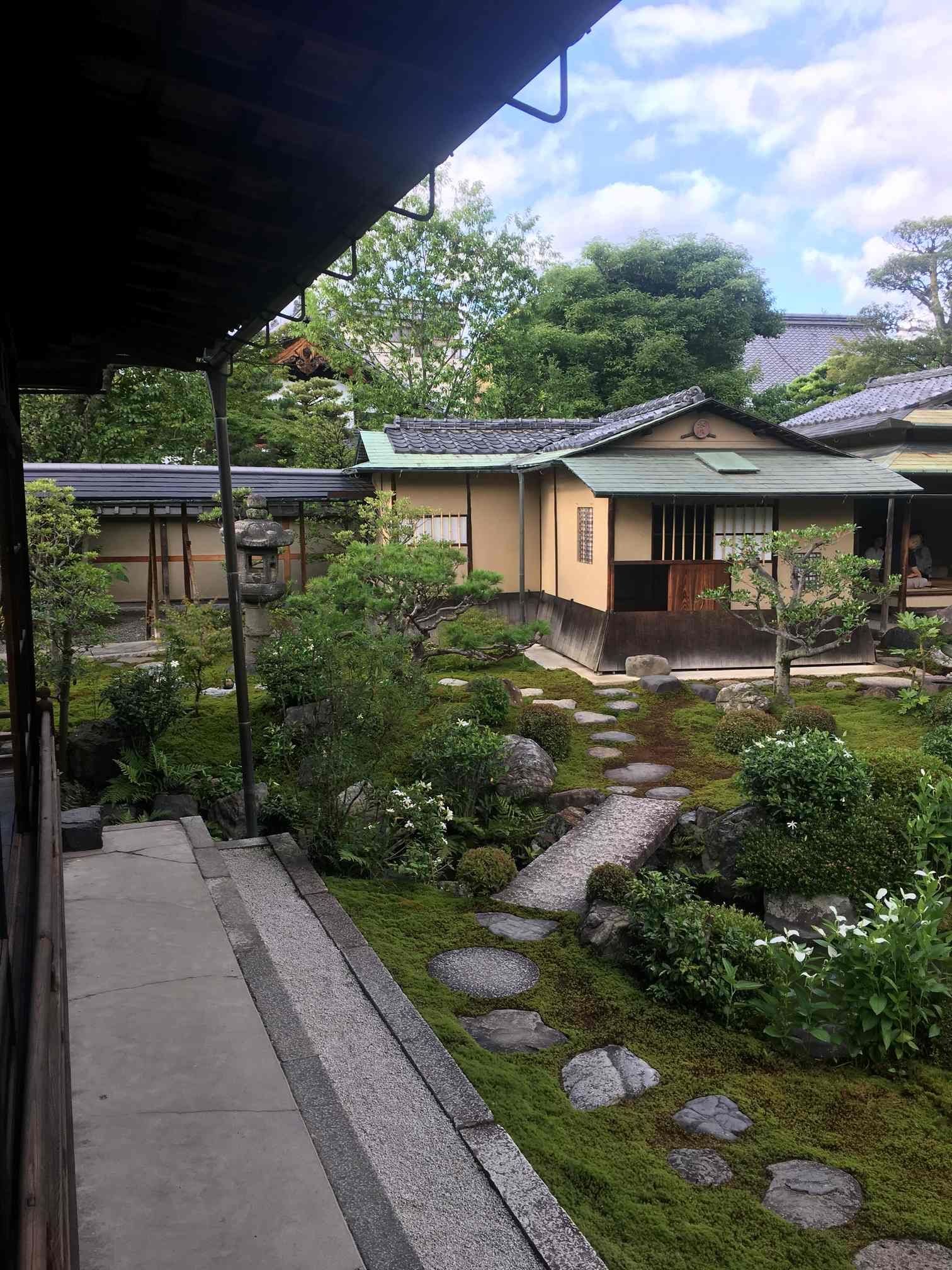

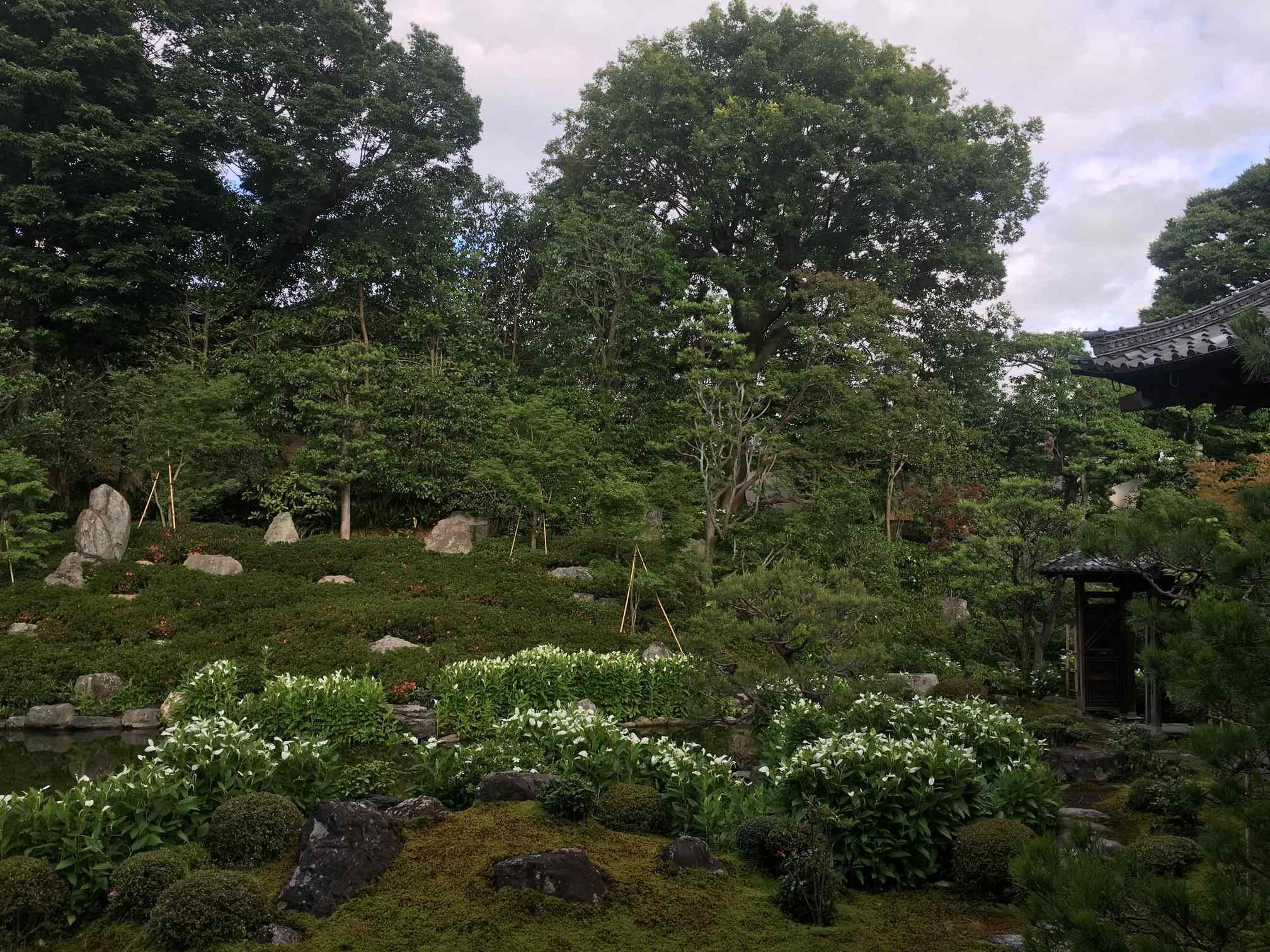
可惜的是五点钟我们被准时的赶了出来。虽然只看了十几分钟,但有种匆匆一瞥,永生难忘的感觉。原来半夏生特别展一年只开放一个月。我们算是很幸运的了。后来科普一下:半夏生就是三白草,是一种草药,每年6月中旬到7月上旬这段期间,前端的叶子会转白,充满夏季风情,正是最佳观赏期。
Unfortunately we needed to leave at 5:00pm. Although we only enjoyed around 10 minutes for the gardening, it is unforgettable. The show was only open one month for one year. Hangesho is Saururus chinensis, which is an herb that grows in low, damp places and is used to treat inflammation in diverse condition such as edema, gonorrhea, and asthma for Tradition Medical Uses.
菊乃井 Kikunoi
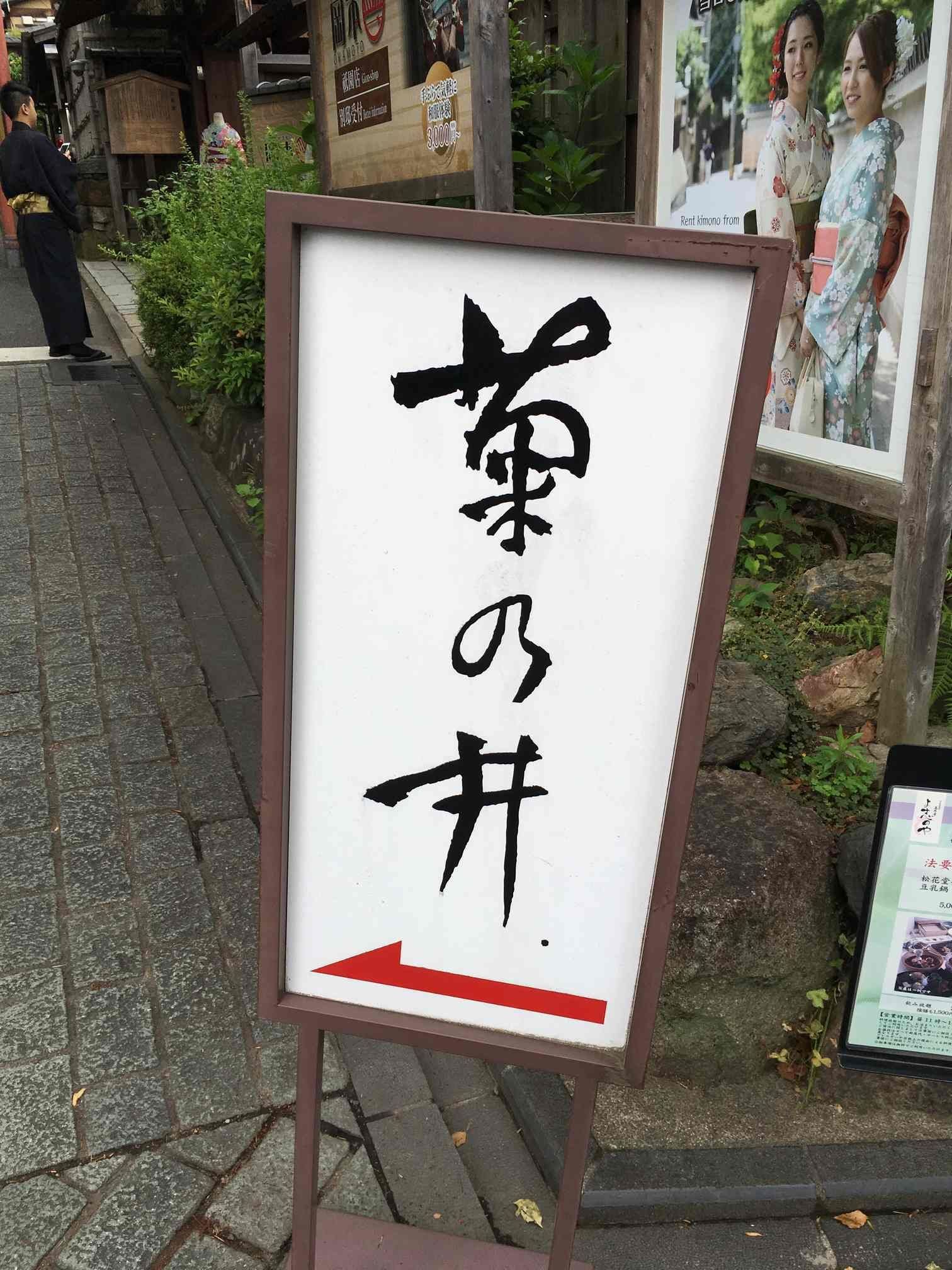
这次京都的重头戏就是这家菊乃井。京都菊乃井总店是一家米芝莲三星的日本传统餐厅,主打怀石料理。菊乃井的历史(来自官网):
It was my favourite part - Kikunoi. Kyoto Kikunoi (main restaurant) is Kyoto Kaiseki Cuisine with three Michelin stars. The history of Kikunoi (from official website):
菊乃井的总店在京都东山之麓,占地广大。
相传丰臣秀吉的第一位妻子将「菊水之井」的井水用来泡茶、从井里汩汩冒出的水就像盛开的菊花一般、因此菊乃井的祖祖辈辈都非常爱护这口井、其后更是开始使用这口井的井水来做菜煮饭。菊乃井这个名字以此井来命名的。
创立于1912年、现在的社长・村田吉弘是第三代。
Kikunoi is located on extensive grounds at the foot of Higashiyama Mountain Range in Kyoto.
Legend has it that water from a local well called “Kikusui-no-i” was used by the first wife of Toyotomi Hideyoshi (a key figure in Japan’s feudal era) to make tea, causing spring water to burst forth in the pattern of a chrysanthemum (“kiku” in Japanese) in full bloom. The locals took care of this well for many generations, and eventually began to use its water in cooking. This was the origin of the name Kikunoi – literally meaning “chrysanthemum well.” The restaurant itself was established in 1912 and is currently headed by the third-generation owner-chef Yoshihiro Murata.

图片来自官方网页。 The picture from official website
菊乃井之所以出名,不单因为米芝莲三星的美食,还因为其非常亲民的价格。10000日元可以吃到米芝莲三星的怀石料理,在京都或是日本都很难找到第二家了。
Kikunoi is not only famous for their delicious food but also for the acceptable price. It is nearly cannot find another Kaiseki Cuisine with three Michelin stars for 10000 Yen.
当时菊乃井还不能网上预订(现在可以了),只能让酒店帮忙预定。我们住的酒店只帮已经入住的客人预订。我们办理入住的时候请酒店帮忙预定,结果怀石料理已经预定满了,只可以预定时雨便当了。
Kikunoi could not make reservation on line then (It can do now). We could only ask the hotel to help for reservation. However our hotel could help guests to make the reservation only after their check-in. Unfortunately when we checked in all the Kaiseki Cuisine were full. We could only reserve Shigure Meshi Bento Box.
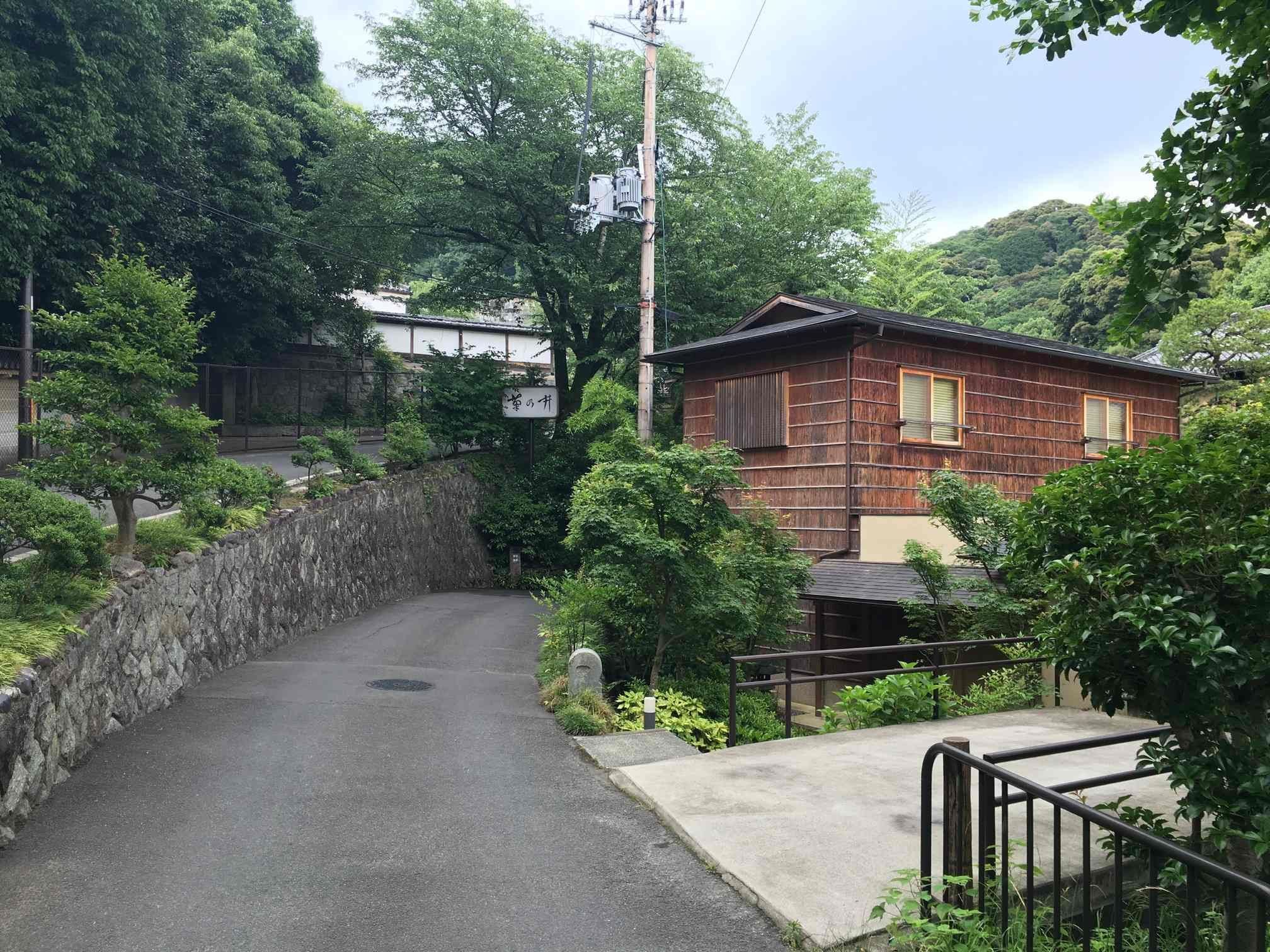
菊乃井京都总店在八坂神社旁边。
Kyoto Kikunoi (main restaurant) is near Yasaka Shrine.
进门前有位老者会见看你有没有在预定的名单上,然后脱鞋,这位老者会记下你的名字,并把鞋子收好。当吃完出来的时候鞋子就会放在门前,而且不会出错。
At the entrance there was a waiter to check the reservation list. After got off the shoes, the waiter would put the shoes in place and the shoes would be ready when you left.
跟着女将进去,来到2楼宽敞的大厅,应该有大概10-12组客人。虽然人很多,不过大家都不会大声说话,以免打扰安静的用餐环境。
Then a waitress led us to the wide room in the second floor. There were around 10-12 sets guests. Although there were many people, it was decent quiet.
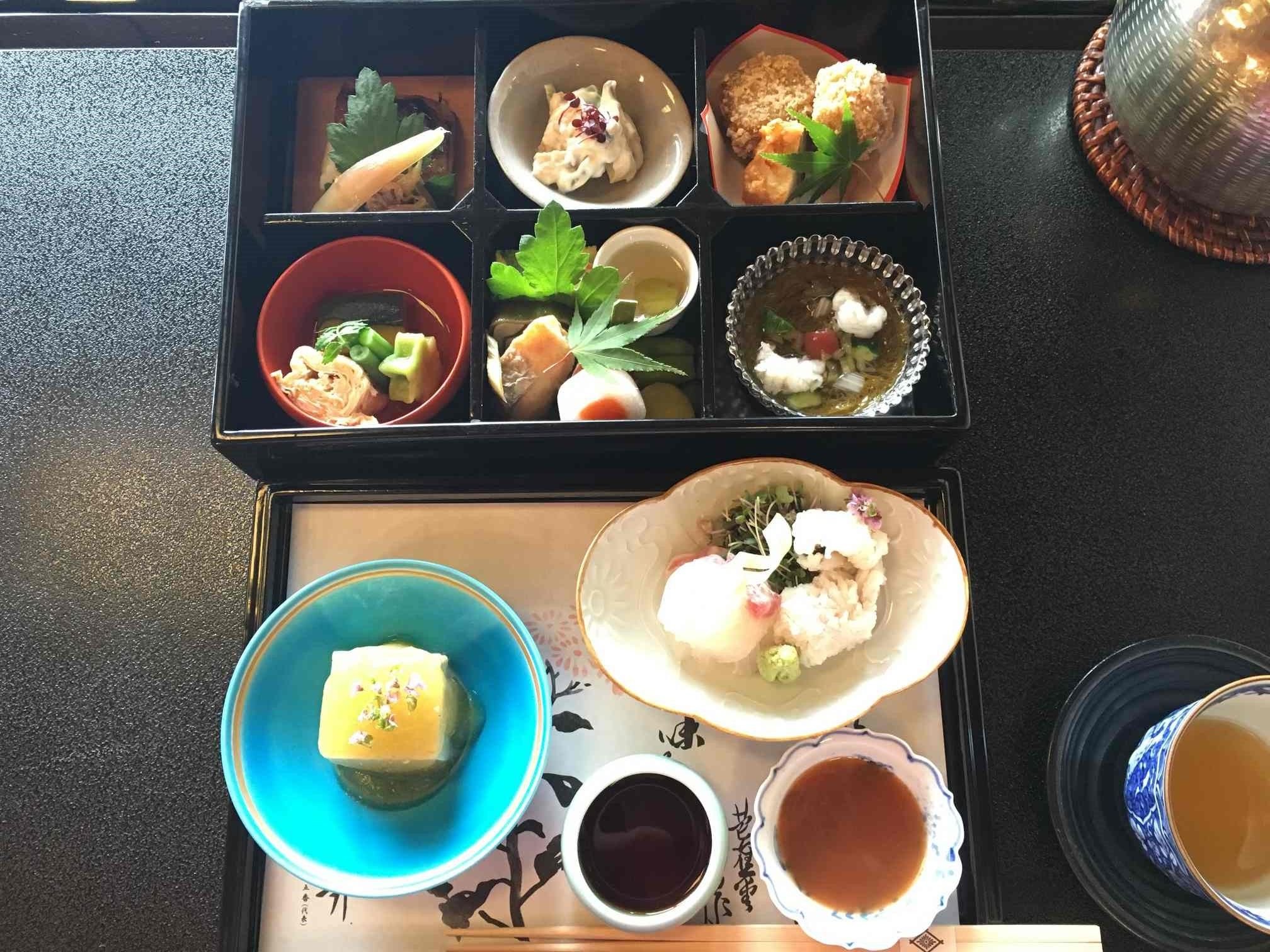
便当上菜很简单,一次过基本都上齐。上图下半部分2个是「含刺身」这一款另外加的。
The lunch box was served at one time. The lower part was additional Sashimi set.
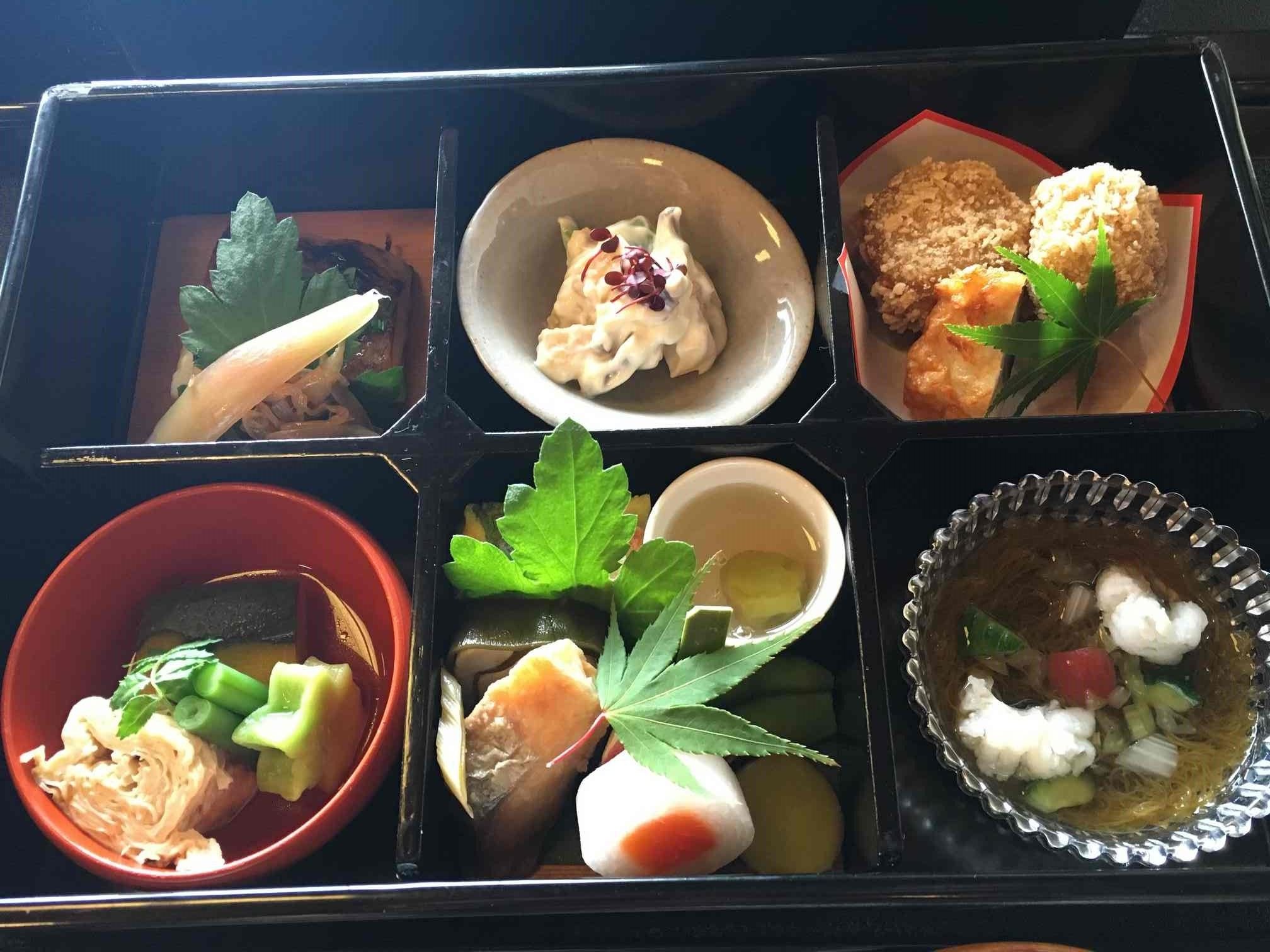
便当盒里是六款不同的小菜,时雨便当里所用的食材,都是强调天然、纯粹,无人工添加物,所以让人吃得很安心,味道也是由食材本身来去做提味调理,格外费工夫。
All of cuisine uses natural ingredients. At Kikunoi each of the dishes are an expression of life itself, never forgetting how much we owe nature.
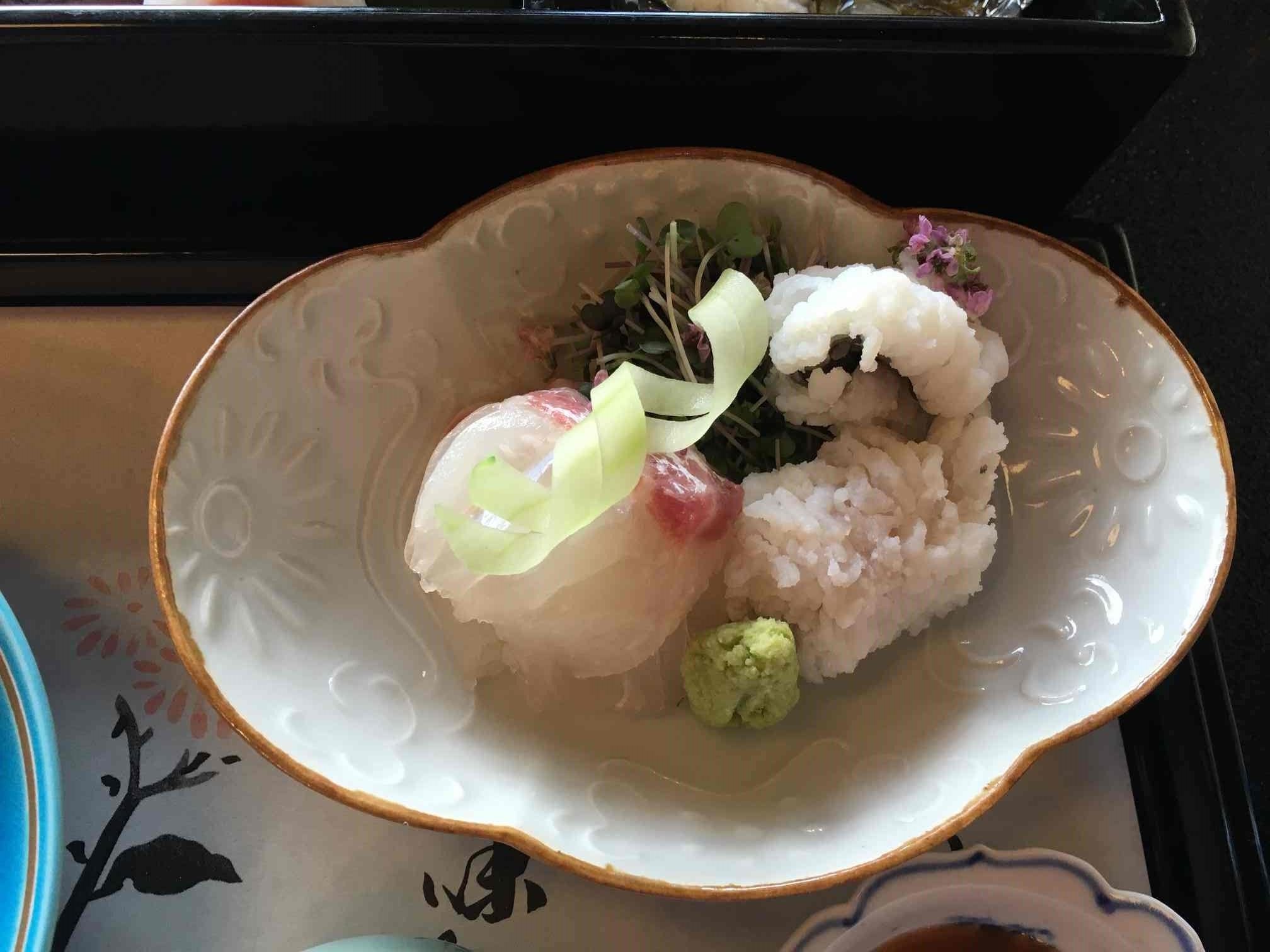
刺身很鲜甜。
Sashimi was delicious.

豆腐口感绵密厚实,非常好吃!
Flavour of dofu were rich and nice.

最后是招牌,山药鱼片鸡蛋饭。浓稠的山药包裹着饭,配上鱼片和鸡蛋,看上去就像一幅风景画,别有一番风味。
It was the main course. It looked like a piece of art and tasted good.
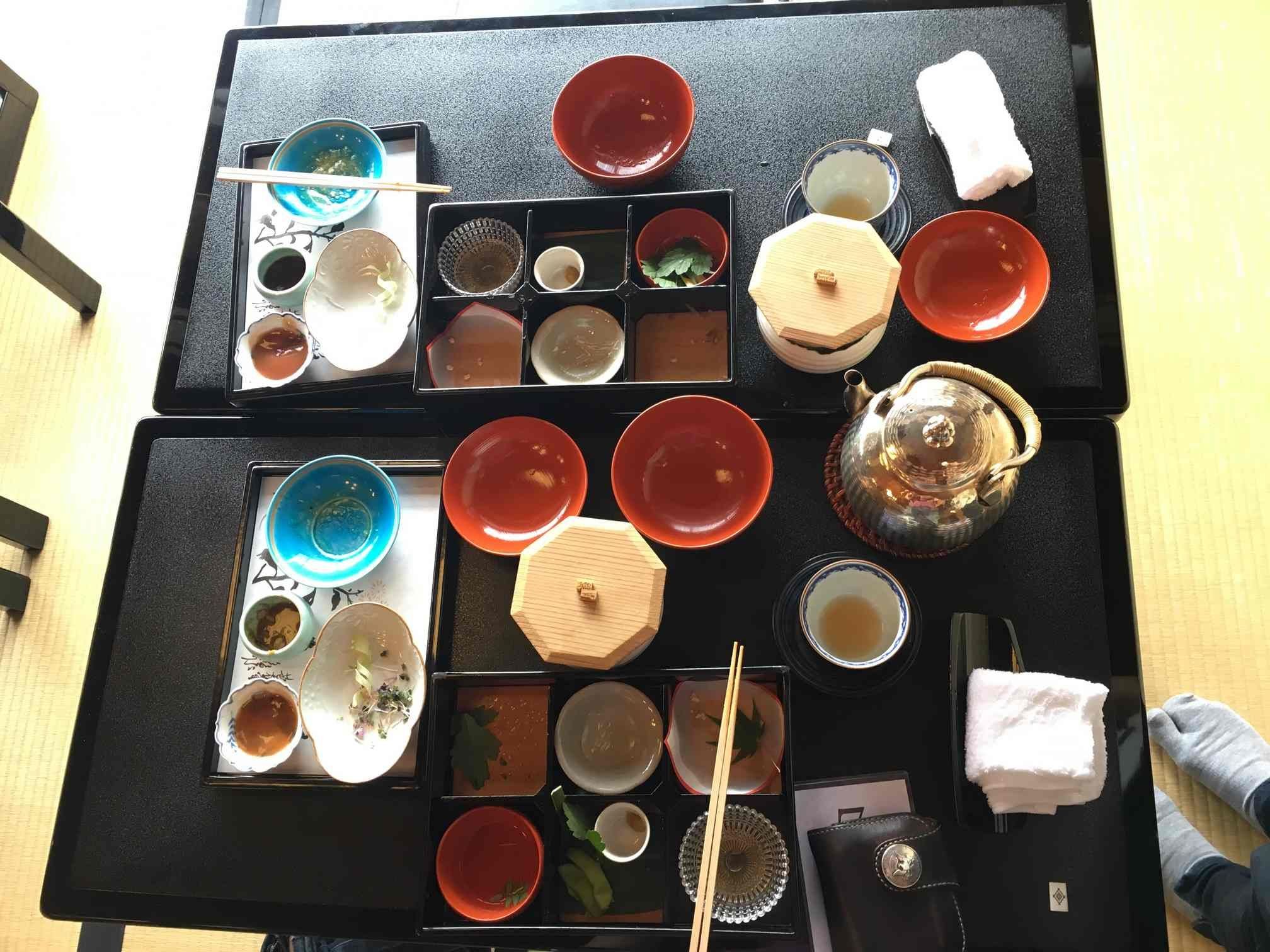
光盘,我连盘子都想吃了。 All emptied.

吃完付款的时候是去另外一个房间。然后门口的老人家会把你的鞋子摆好。
Check-out was at another room.
这一顿虽然没有吃到传说中的怀石料理,但是通过这个制作精美的便当,也让我深深体会到了日本精湛的饮食文化。
Although we didn't have legendary Kyoto Kaiseki Cuisine, we deeply understood the excellent Japanese cuisine culture through a delicate lunch box.
伏见稻荷大社 Fushimi Inari-taisha
来了京都,也一定要看伏见稻荷大社的千本鸟居。介绍来自维基百科:
Torii in Fushimi Inari-taisha is another attractive place in Kyoto. The follow introduction is from Wikipedia:
伏见稻荷大社位于稻荷山的山麓,在传统上整个稻荷山的范围都被视为是神域(圣地)的范围。伏见稻荷大社主要是祀奉以宇迦之御魂大神为首的诸位稻荷神,自古以来就是农业与商业的神明,除此之外也配祀包括佐田彥大神、大宫能卖大神、田中大神与四大神等其他的神明。由于每年都有大量的香客前来神社祭拜求取农作丰收、生意兴隆、交通安全,使得该神社成为京都地区香火最盛的神社之一。另外,起源于江户时代的习俗,前来此地许愿的人们往往会捐款在神社境内竖立一座鸟居来表达对神明的敬意,使得伏见稻荷大社的范围内竖有数量惊人的大小鸟居,而以「千本鸟居」之名闻名日本全国乃至於海外。捐款竖立鸟居的单位包含个人、公司行号乃至於各地的商会组织,目前现存的鸟居,最早可以追溯到明治年间。
在神社的分类上,伏见稻荷大社属于式内社(被延喜式神名帐所收录的神社)中的名神大社(祭祀知名神明、自古以来就非常灵验的神社)等级,为二十二社之一,旧时神社社格属官币大社等级。
Fushimi Inari Taisha is the head shrine of Inari, located in Fushimi-ku, Kyoto, Japan. The shrine sits at the base of a mountain also named Inari which is 233 metres above sea level, and includes trails up the mountain to many smaller shrines which span 4 kilometers and takes approximately 2 hours to walk up.
Since early Japan, Inari was seen as the patron of business, and merchants and manufacturers have traditionally worshipped Inari. Each of the torii at Fushimi Inari Taisha is donated by a Japanese business. First and foremost, though, Inari is the god of rice.
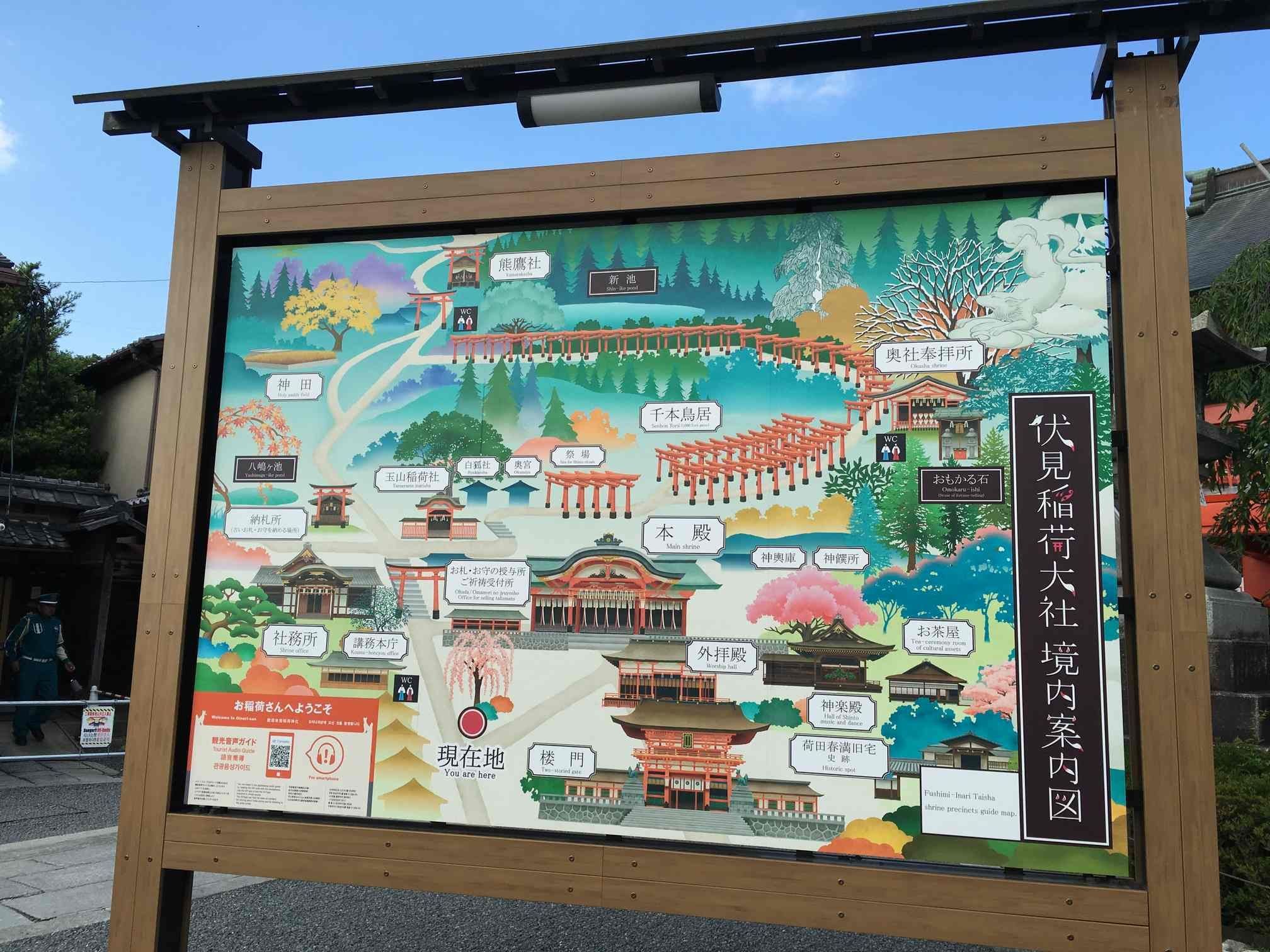
伏见稻荷大社地图。 Map of Fushimi Inari-taisha
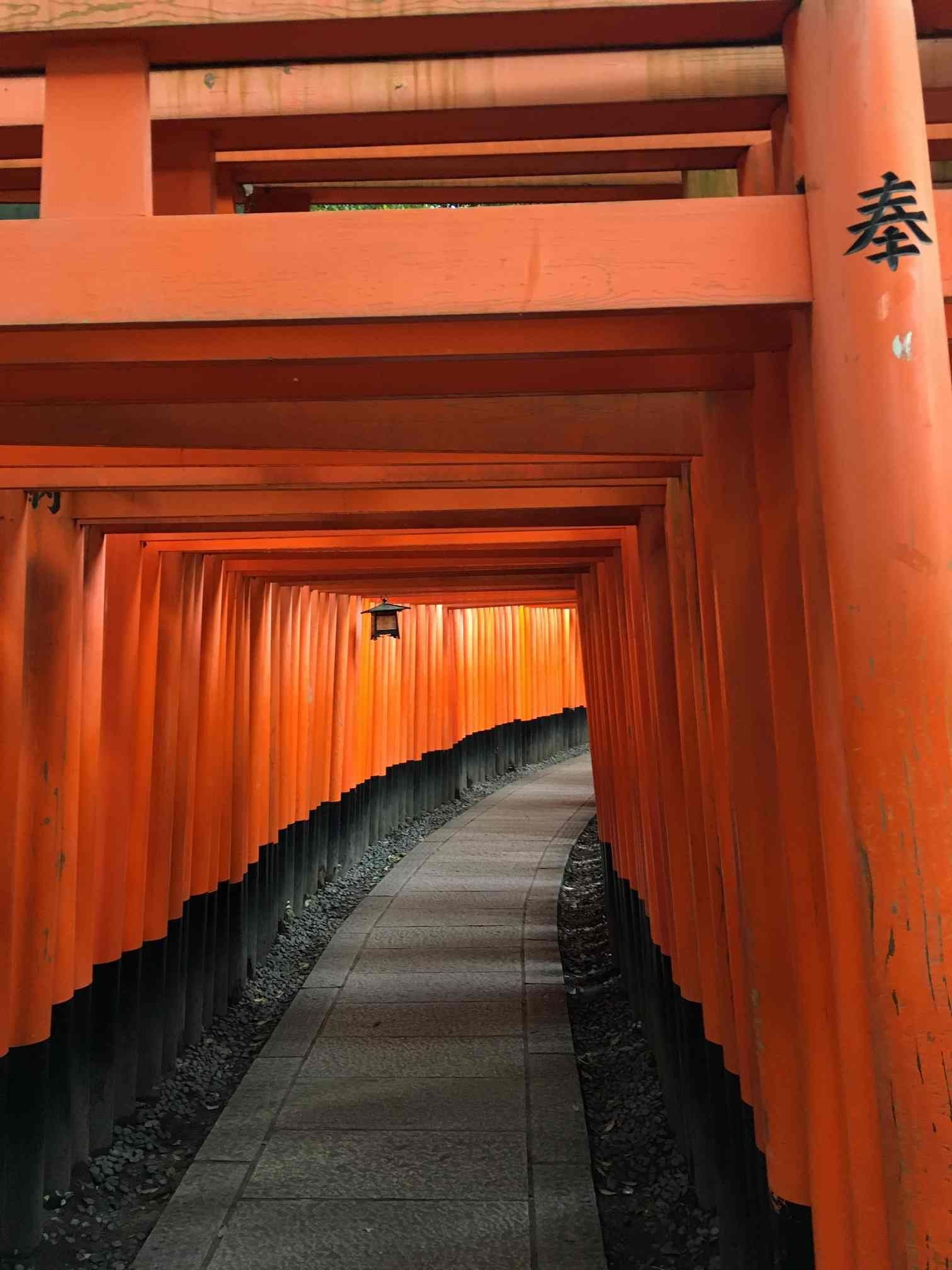
想拍一张没人的真的很困难。这些鸟居是不同的人或者单位树立以祈求神明保佑的。后面有树立者的名号。
A Torii was constructed by someone or organisation for god blessing.
临别京都的前一晚,在酒店吃晚餐。
Before we left Kyoto, we had dinner at the hotel.
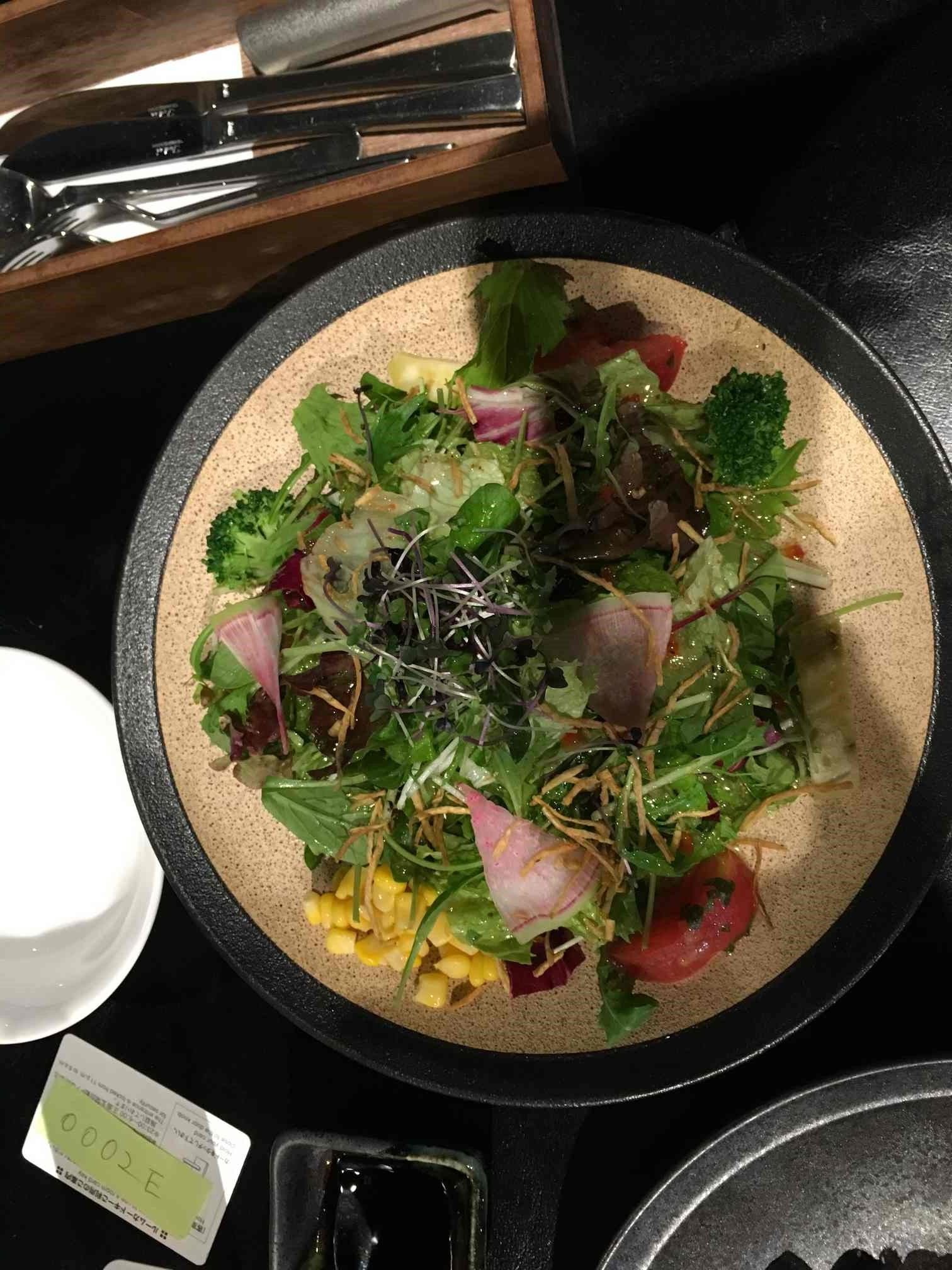
新鲜沙律。 Fresh salad
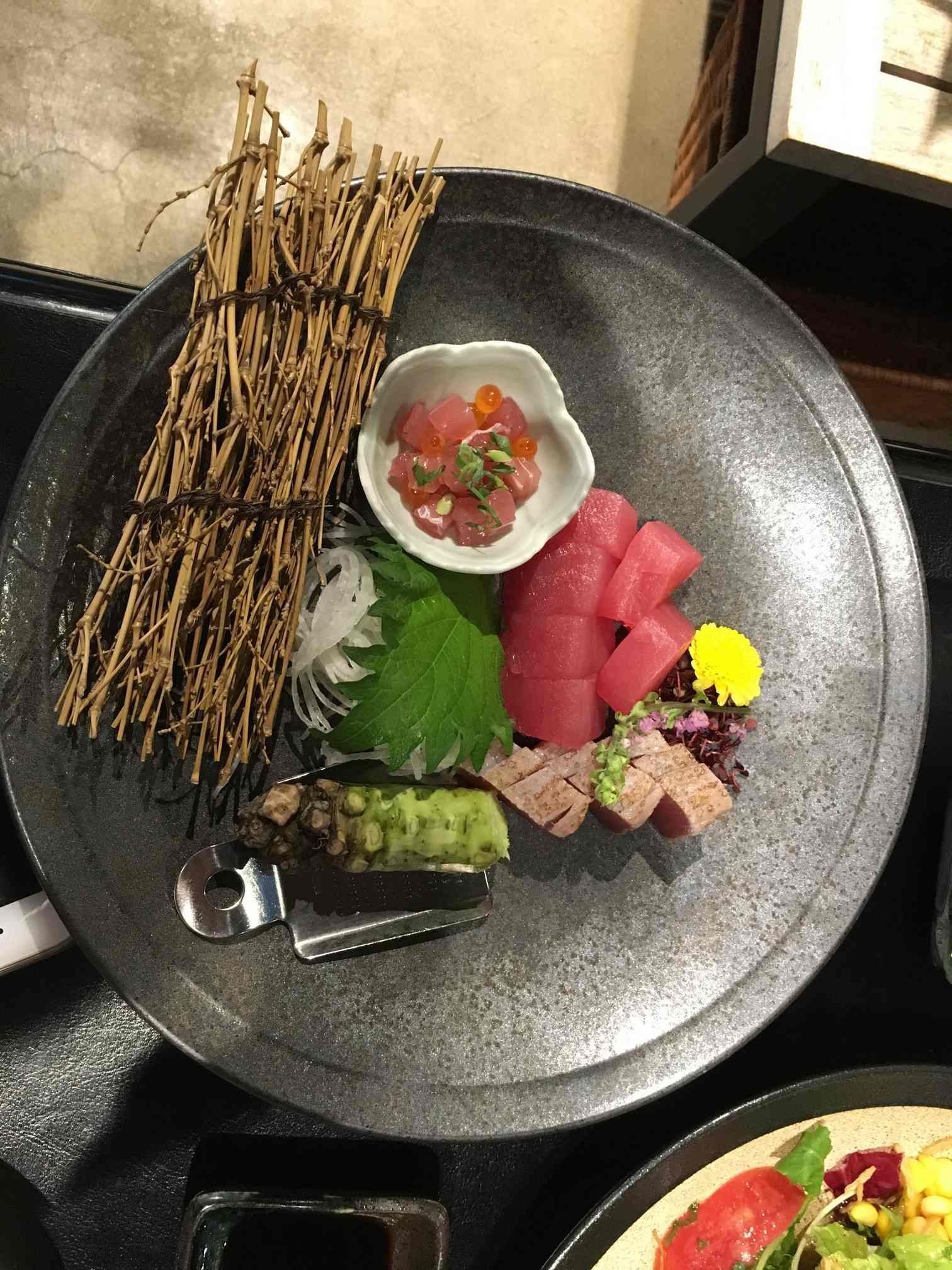
刺身拼盘。 Sashimi
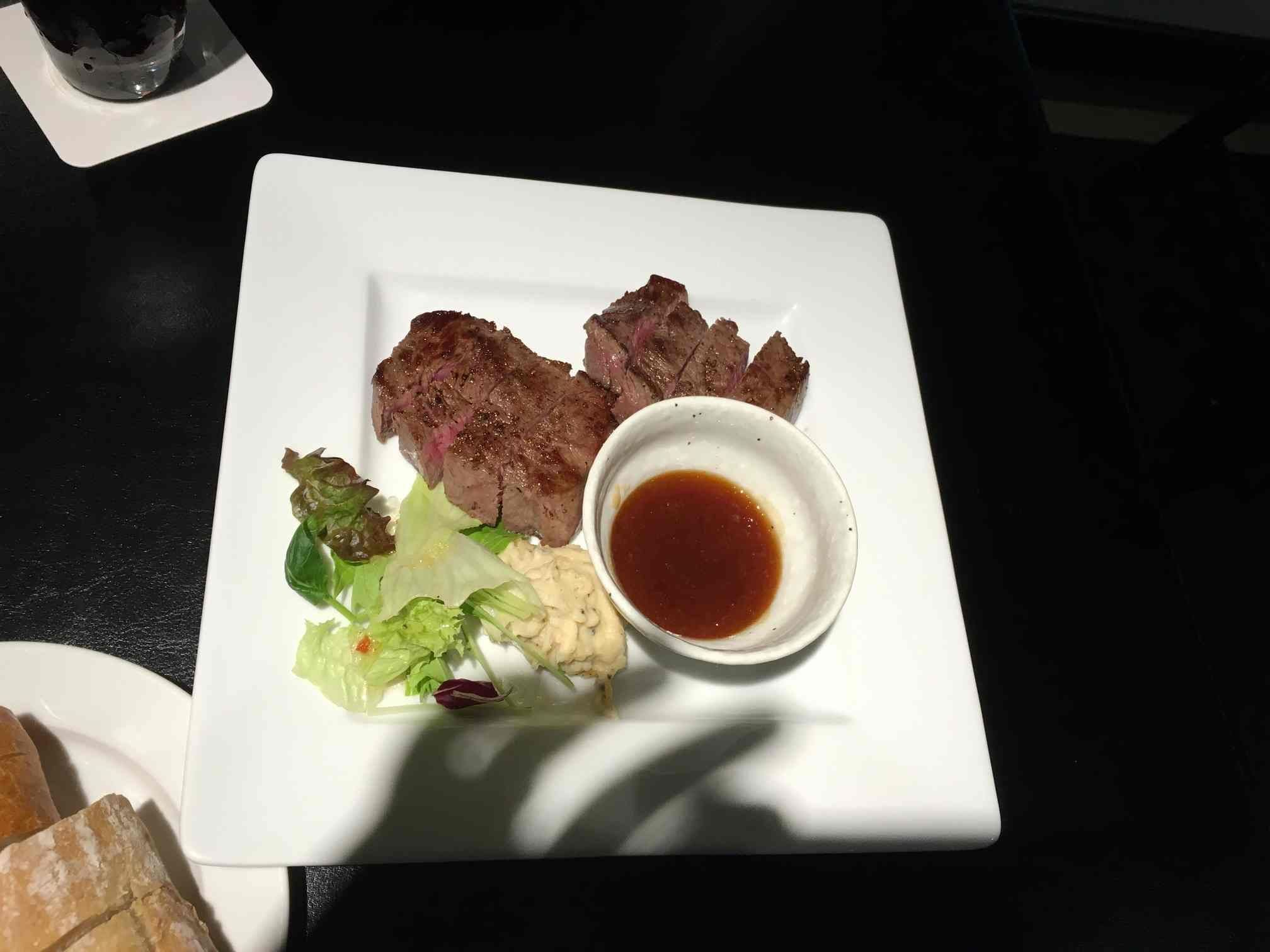
和牛。 Wagyu
味道和质素都比我想象中的好。特别是和牛,还要了两份。
The taste and quality were much better than what I expected. We encored another set of Wagyu.
京都的庭院非常有特色,美丽精致。深深体现了日本那种追求极致的匠人精神,是我们需要用心学习的地方。
The gardening in Kyoto is very elegant, beautiful, neat and clean. We need to learn that Japanese artisan spirit for perfection.

离开京都,回到大阪随便逛了逛,在药店看到这个。男同胞都明白吧,嘿嘿嘿。
It was a good stuff for men.
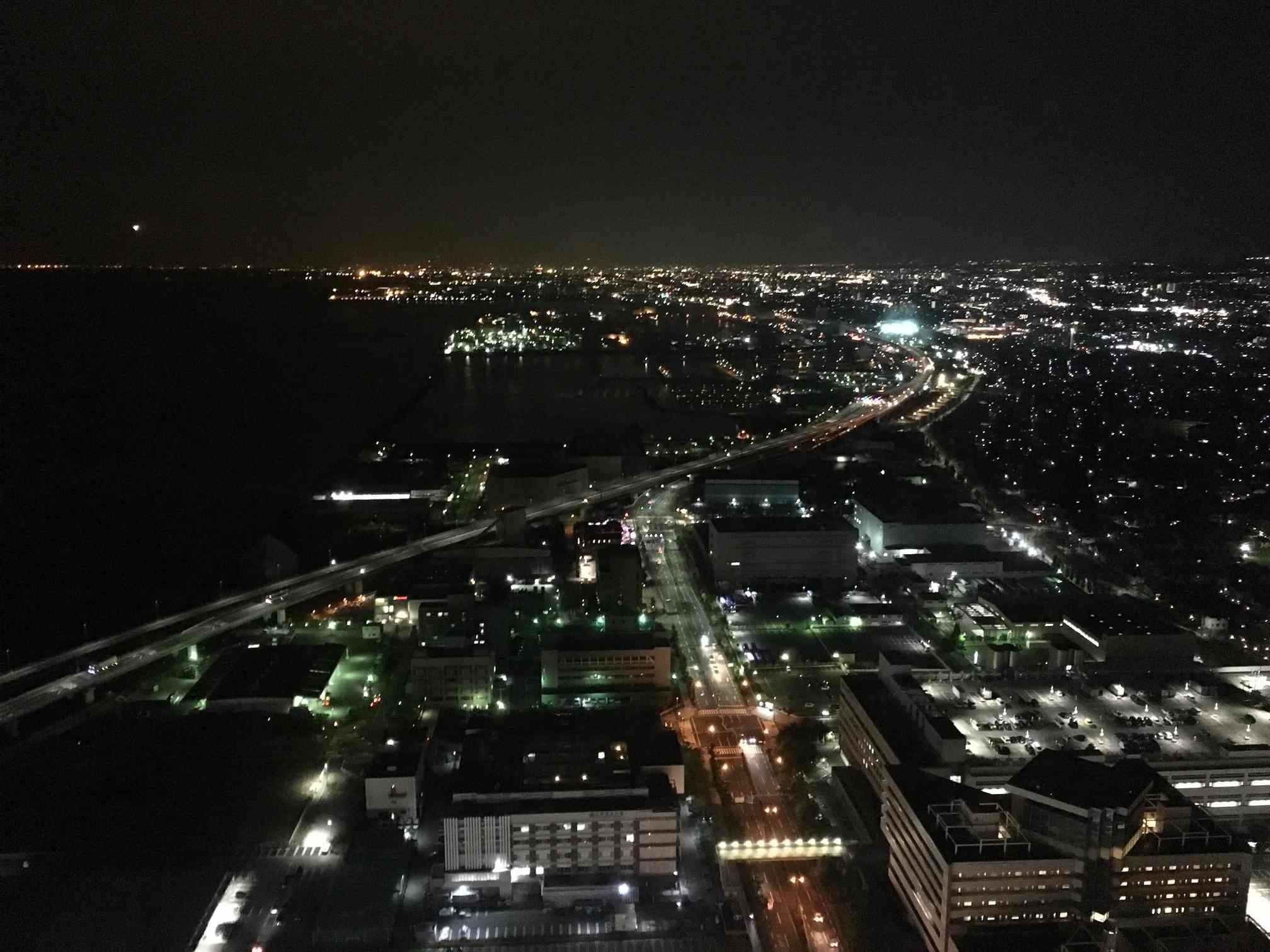
大阪国际机场附近酒店夜景。 Night view from a hotel near Osaka International Airport
再会,日本!
See you, Japan!
完。the END.
近期文章(My Previous Posts):
My First Travel in Japan: Osaka-Nara-Kyoto (Kyoto, part 2)~~~银阁寺,哲学之道, 蟹道乐__第一次日本之旅:大阪-奈良-京都(京都篇, 第二部分)
科技与生活:从阿里巴巴的达摩院想到的
My First Travel in Japan: Osaka-Nara-Kyoto (Kyoto, part 1)~~~本家第一旭,金阁寺,龙安寺,仁和寺__第一次日本之旅:大阪-奈良-京都(京都篇, 第一部分)
想谈谈我对保险的看法
My First Travel in Japan: Osaka-Nara-Kyoto (Nara)~~~第一次日本之旅:大阪-奈良-京都(奈良篇)
My First Travel in Japan: Osaka-Nara-Kyoto (Osaka)~~~第一次日本之旅:大阪-奈良-京都(大阪篇)
——————————————————————————————
